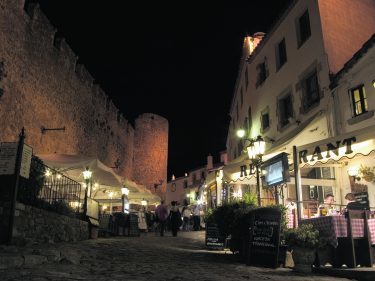I puffed up the hill, pebbles jumping into my flip flops and the sun beating down on my shoulders.
I was hot, I had been walking all day, and yet, as we came to the top of the hill and looked across the sparkling blue Mediterranean sea, the walk was completely worth it.
Costa Brava has a stunning coastline – rocky and rugged with hideaway caves and inlets where pirates once hid their wares and fishermen still leave their crab pots. At the top of the hill I had just climbed was the ruin of an old church and the medieval walls of the town Tossa de Mar.
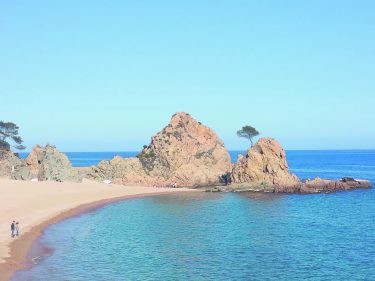
I had always dreamt of Spain, but this was nothing like I could have imagined.
As well as the vineyards and the gigantic fields filled with juicy olives there are magnificent views of a land which is rich in heritage and culture. From the Pyrenees to the Mediterranean, the greenery, culinary traditions and the cava stun tourists who come to the Catalan region.
Jet2.com and Jet2holidays had their inaugural flight to Girona this summer, and the team welcomed their first guests with cake pops in Glasgow and cava in Girona.
The two and a half hour journey flew past quickly, with the friendly captain coming over the radio regularly to inform us what towns and cities we were flying over. Costa Brava is within the province of Girona, located in the north east corner of the Iberian Peninsula. It was here we landed, in a region that is perfect for tourists who love to fill their holiday with history, fine food and wines and is surrounded by beaches, natural coves and forests.
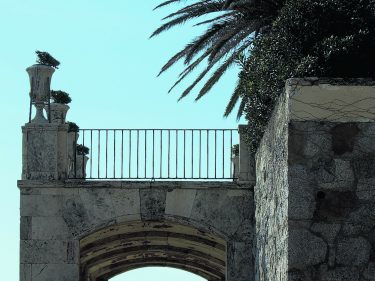
PLATJA D’ARO
I stayed in a coastal town in the heart of Costa Brava, called Platja d’Aro. There are a large number of shops to potter through and buy souvenirs, entertainment, restaurants and pubs. Here I had my first ever proper sangria in a friendly pub where the summer evening was warm and the atmosphere was friendly and buzzing.
A walk along the coastal path of the town takes you next to the homes of the rich and famous. When you’re not admiring the architecture, you can look out and have uninterrupted panoramic views of the sea for miles around.
The town is a hive of shops, cafes, bars and restaurants. Aradi was at the other end of the town from the hotel, but the seafood was worth the wait. Welcomed by a tank filled with lobsters, a quirky waiter attempted a mix of Spanish and English to help me decide on the anchovies and then the battered langoustines.
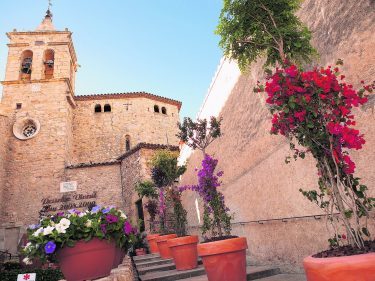
If you have to do one thing in Costa Brava, it is to try the seafood. I didn’t like anchovies before, but these changed my mind. The food is fresh and full of flavour coming straight from the water, often on the same day it’s served to you.
My home for the weekend was the Fergus Style Nautic Park, a four-star hotel located a 15 minute walk from the town’s nightlife.
Nice and quiet, the hotel offered all the meals I could desire, including a buffet continental breakfast and a bar with salsa dancing for the evening. The bedroom overlooked the pool, surrounded by sun loungers.
In the evening the water sparkled as it changed colour. You could sit for ages watching the water, with the hills in the background, but then you would be missing out on the rest of Costa Brava.
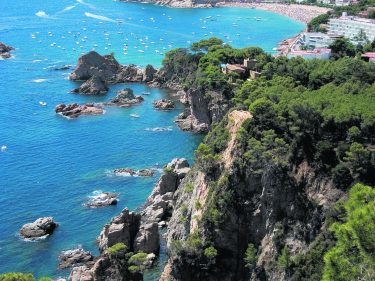
JARDINS DE SANTA CLOTILDE
I got sunburn on my pale Scottish shoulders while standing mesmerised overlooking the gardens in Lloret de Mar. Located high on a cliff top, they were designed by architect and urban planner Nicolau Maria Rubio i Tuduri in 1919, on the commission of the Marquis of Roviralta.
Inspired by the Italian Renaissance, the terraced gardens, criss-crossing paths, sculptures and fountains create a place of tranquility to while away the day.
On our way around the gardens we spotted a secret beach in the cliffs below. The amazing guide from the tourist board took us down through the woods and we got to enjoy the very cool water while munching on wild asparagus which grew in the surrounding forest.
Thankfully I didn’t have my glasses on, otherwise the vision of an unclothed man next to the rocks would have been a bit of a surprise. The secret coves along that shore are home to bathers who prefer to shed their clothing, I was reliably informed.
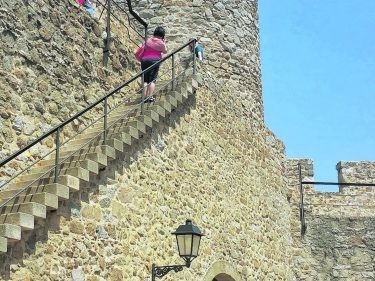
TOSSA DE MAR
On the cobbled pathway up the medieval village, there is the nicest little restaurant. Run by three generations of the same family since 1969, Castell Vell is in the heart of Vila Vella, facing the museum and looking towards the sea.
Sitting on the veranda, under the shadowy ceiling of vines, it is like another universe. We were hosted by Madam Rosa, a lovely lady who ensured we tasted the finest food the town has to offer. That meant seabass in a tomato and herb sauce, cooked in one big dish and full of summer flavours.
PALAMOS
The historic town was an area of industrial expansion, famous for its fishing heritage. Originally the town was built inside walls to protect the inhabitants from attacks – either pirates from the sea or military disputes by land. Similar to the other towns in the region, tourism has not overwhelmed it, instead the industry has become integrated into daily life.
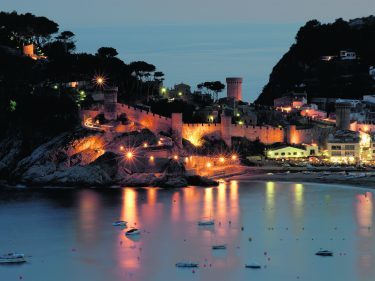
A trip to the fishing museum, housed in a former boat shed, shows the history of Mediterranean fishing. Around the corner you can also visit the fish marketplace, where observers can witness the fish auction every evening from Monday to Friday with the local fishermen.
Away from the beach, the veins of the town are its cobbled streets. Wine, clothes and souvenirs are all sold here, but it feels more traditional than the tourist led shops on the front. If you look up, the tall buildings are caked in architecture, with carvings and balconies aplenty.
Half the joy of a holiday is sitting outside a restaurant with a cold drink and watching the world go by, and there are plenty of places to choose from.
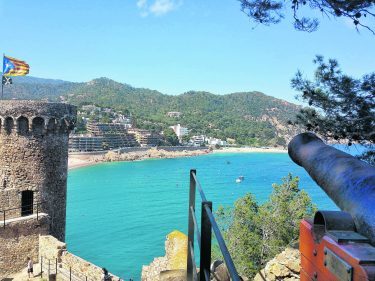
PERALADA
This was the highlight of the holiday for me. We travelled by car north towards the Pyrenees mountains for about an hour from the coast. Here is the Castillo Perelada winery and cava cellar across the road from the magnificent castle and medieval monastery.
Inside the 14th century building there is a huge Catalan art collection, that of Miguel Mateu. The museum covers old books, paintings, plates and other oddities from the region including glass and ceramics.
Proud producers of wines and cavas, Peralada offer tastings of their wares. The brut rose apparently was favoured by Salvador Dali, and the Peralada version was sweet and fruity and just what you need on a summer’s afternoon.
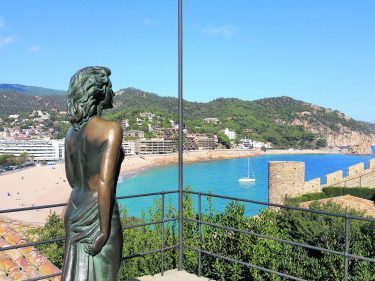
The Hotel Peralada, with a wine spa and golf course, is a short drive from the winery. Here we were spoiled to the most divine food, including the seasonal wild asparagus with mushrooms and foie vinaigrette, salmon tartar with salad, John Dory, beef and then an assortment of cheeses, of which some were more pungent than others.
To finish we had an orange drunk, with pepper Sichuan ice cream. The drunk came from the liqueur used and the ice cream was surprisingly pleasant. Each course was paired perfectly with the wines of Castell de Peralada, but I didn’t get to discover what a wine spa entailed…
